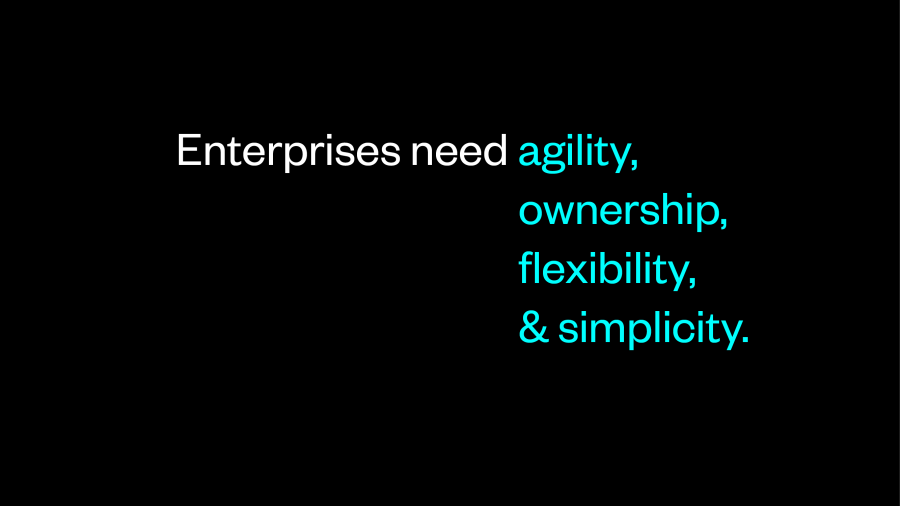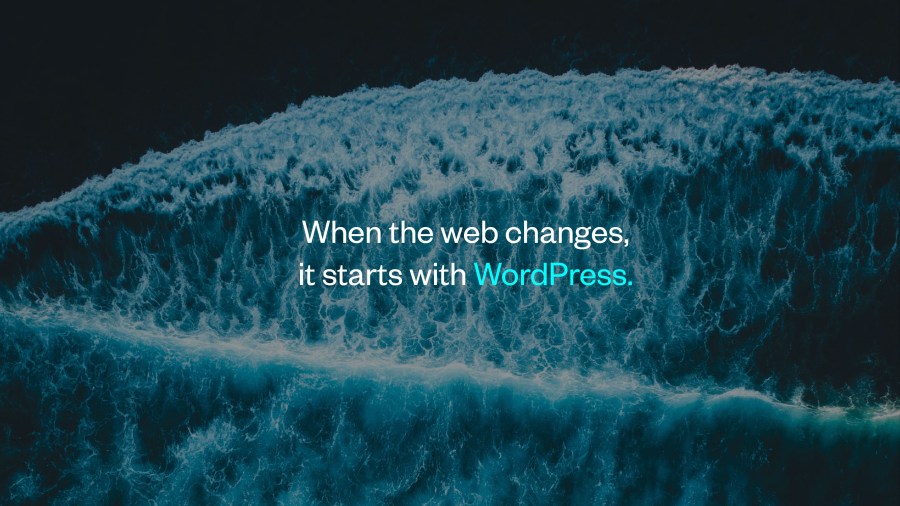This post shares video and key takeaways from WordPress VIP CEO Nick Gernert’s talk at WordCamp US in St. Louis on November 1, 2019.
Right now, the opportunity at the high end of the market is as big–if not bigger–than any other opportunity for WordPress. Depending on which reports you read, we’re competing in a $10B market that’s growing 18% annually.
However, there’s a disconnect between the demonstrated success of WordPress in the enterprise, and the market’s perception of its capabilities. So let’s celebrate what has already been accomplished in enterprise WordPress, and consider how we can realize the full potential of WordPress for these complex customers into the future.
The unique needs of enterprise users
For me, enterprise needs fall into 4 core areas: agility, ownership, flexibility, and simplicity.
Agility
Agility is the single largest competitive advantage WordPress sees over other platforms. As pressure to deliver increases within organizations, the agility of the tools required to do the job becomes even more important.
Case study: Capgemini
VIP and Human Made’s work with Capgemini, the global technology consultancy, demonstrates this perfectly. Capgemini suffered many chokepoints with their previous platform: small changes required days of lead time, a handful of people in an organization of 200K understood how the platform worked, and people were spinning up their own platforms, which created a governance nightmare.
As pressure to deliver increases within organizations, the agility of the tools required to do the job becomes even more important.
By migrating to WordPress, Capgemini eliminated licensing worries and gained access to thousands of pre-built integrations. Removing their bottlenecks helped Capgemini increase productivity and improve results. In specific terms, 1400 users across 38 sites in 10 different languages are now contributing to 20K+ pages. That agility truly differentiates the platform from other solutions.
Ownership
Ownership means many things in the enterprise: Ownership of product. Of customer journeys, of data, of future business needs. In an enterprise context, most software comes from closed, opaque systems commonly associated with strict vendor lock-in. With content sitting at the core of so many customer experiences, ownership (and also transparency) are critical to long term success.
Flexibility
The flexibility inherent to WordPress is what has allowed it to see its 16th birthday and will enable it to see many many more. If enterprises want decoupled architectures today, we can do that. We can also say with confidence that the platform will evolve to serve their future product roadmap, thanks to the inherent flexibility of the platform.
This flexibility is what empowers WordPress to serve both the monolithic model of delivering web pages, but also COPE (Create Once, Publish Everywhere) approaches to content, which rely upon API-driven applications serving components.
The new block editor has been the single-most exciting development since the custom post type and this is validated in the response we’re seeing from enterprises.
Case study: News Corp
WordPress forms the core of News Corp’s global publishing operation. There are some really interesting ways Big Bite is working with News Corp to tailor the block editor to their needs, for publishing workflows and ultimately site management.
The new block editor has been the single-most exciting development for me since the custom post type and this is validated in the response we’re seeing from enterprises. Layering onto that the future promise of full site management only continues to make things more interesting.
Simplicity
WordPress makes the complex simple. In fact, WordPress’s success in the enterprise to date is rooted in the fact that it’s not enterprise software. It’s the software people used because it made them better at their job.
The UI of WordPress is one of the most tested anywhere in software. There are readymade models for those extending WordPress, so organizations spend more time solving business challenges and less time refining UIs. As with Capgemini, the more accessible things are, the more folks will actually use the software and spend their time driving results.
Case study: Hachette Book Group
It’s simplicity that allows Hachette Book Group to empower marketing teams across their organization. They use WordPress to manage a site with thousands of titles, authors, and imprints. That’s in addition to a catalog of books that grows by 1,700 or so each year. Choosing WordPress has allowed their digital teams to focus less on marketing activities and more on analysis and optimization. Folks at Alley were critical to simplifying their processes and integrating other external systems into the rollout.
Paving the way for continued growth
When the web changes, it starts with WordPress. If you want to influence adoption, you do it with the platform that powers over one-third of the web. Digging deeper, the sustainability of WordPress’s current success in the enterprise, and the potential of future growth, is rooted in two core concepts:
- We must always keep in mind the experience of the user. The user-centric nature of WordPress and this community is exactly what has carried it to the usage we see today. It is our greatest asset when advocating for the potential of WordPress with the world’s most demanding users.
- We must demonstrate empathy for our user’s customer. If we demonstrate WordPress also understands what the success of that user’s customers looks like, we will ensure enterprise adoption of WordPress continues to grow.
The ubiquity, agility, ownership, flexibility, and simplicity inherent to WordPress is powerful to the large organizations that rely on this platform. I couldn’t be more excited about what the future holds for these forward-thinking applications of enterprise WordPress.

